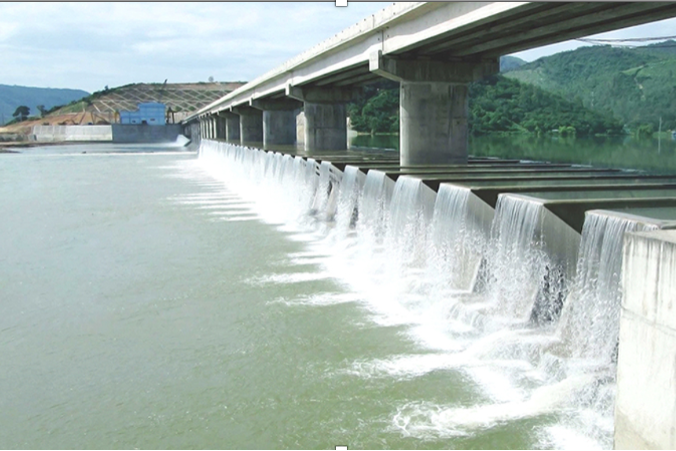Completing the infrastructure system for climate change response is one of the key tasks set by the Government in its Plan for implementing the Politburo’s Conclusion on proactive climate change response, strengthening natural resource management, and environmental protection – Resolution No. 122/NQ-CP.
Ambitious Goals
Accordingly, on resource management, the Government sets the target of investigating and assessing the potential and value of critical natural resources: completing geological and mineral mapping at a 1:50,000 scale over 85% of the mainland; completing investigations and assessments of mineral potential at promising structures in the North Central and Northeastern regions; at least 50% of Vietnam’s sea area to undergo basic investigation of marine resources and environment at a 1:500,000 scale, with more detailed investigation in key areas.
Planning, managing, and sustainably exploiting and efficiently using national resources will be focused on, including fundamentally controlling 90% of water extraction and use activities; improving efficiency and capacity in water use and minimizing water loss in irrigation systems; reducing water loss in water supply activities to 10%; effectively addressing drought and water shortages during dry seasons in river basins and areas with limited water access, especially the South Central Coast, Central Highlands, Mekong Delta, remote areas, and islands. Ensuring land use demands for socio-economic development; maintaining 3.5 million hectares of rice land.
Regarding environmental protection, the proportion of industrial clusters with centralized wastewater treatment systems that comply with environmental standards is targeted at 100%; over 50% of domestic wastewater in class II or higher urban areas will be treated to meet standards and regulations.
 The Government aims to complete investment in climate change response infrastructure by 2030.
The Government aims to complete investment in climate change response infrastructure by 2030.100% of areas with seriously polluted soil will be treated, rehabilitated, and restored; 100% of hotspots and areas contaminated with chemical toxins/dioxin left from the war will be treated entirely; air quality will be improved in urban and densely populated areas; 80% of rural households will use clean water from sources that meet regulations; 100% of the urban population will be supplied with clean water through centralized water supply systems.
About climate change response, investment will be made to complete infrastructure for climate change response and disaster prevention by 2030. The resilience and adaptive capacity of natural, economic, and social systems will be improved; innovative solutions for climate adaptation will be implemented; capacity for disaster forecasting, warning, and climate change monitoring will be enhanced; proactive response and damage mitigation from natural disasters will be ensured, focusing on protecting human lives during storms and floods; 80% of households in frequently disaster-affected areas will have safe housing.
Greenhouse gas emissions will be controlled, with a national emission reduction of 15.8% compared to the Business-As-Usual (BAU) scenario; energy savings of around 7–10% in total final energy consumption compared to BAU; a shift in energy use structure to increase the proportion of renewable energy in total primary energy supply to about 15–20%.
Review and revision of many laws
To achieve these goals, the Government identifies the main task as raising awareness and unifying actions and behavioral changes across society on proactive climate change response, disaster prevention, resource management, efficient use, environmental protection, and emission reduction...
This goes hand in hand with improving institutions, policies, and laws. Accordingly, in the coming period, the Government will develop a national strategy for preventing and responding to non-traditional security threats by 2030, with a vision to 2045.
Mechanisms and policies will be developed and issued to mobilize resources for climate change response and enhance the effectiveness of resource management and environmental protection.
The focus will be on amending and supplementing the law on hydrometeorology, the law on economic and efficient use of energy, the law on marine and island resources and environment, the law on biodiversity, and the law on forestry.
Pilot and expand green economy and green rural models
From now until 2030, the government will prioritize the effective implementation of the National Green Growth Strategy for the 2021–2030 period, with a vision for 2050. This is based on research, pilot implementation, and scaling up of green economic, urban, and rural models; promoting sustainable production and consumption.
At the same time, priority will be given to resources to address risks of resource depletion, environmental pollution, degradation of natural ecosystems, challenges in climate adaptation, and achieving the net-zero emissions target.
Programs, projects, and initiatives for environmental protection and climate change response for the 2026–2030 period will be developed and implemented; resources will be concentrated to effectively address urgent environmental issues and comprehensively implement tasks and solutions for climate change response.
The National Circular Economy Action Plan 2035 will be implemented; ministries, sectors, and localities will develop and carry out circular economy plans in conjunction with digital transformation and innovation; research, pilot application, and scaling of circular economy models in sectors and fields will be promoted. Material use across the entire economy and in each industry will be studied and evaluated to formulate appropriate policies for effective circular economy implementation.